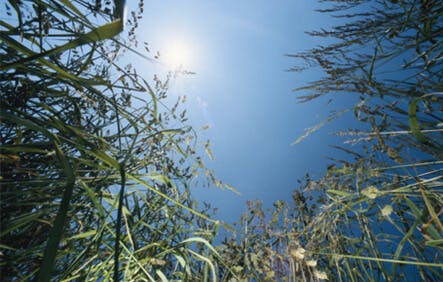Soy and Vitamin D: Two Ways to Prevent Colon Cancer

According to the Centers for Disease Control, colon cancer is the third-most common cancer in both men and women, and the second leading cause of cancer-related deaths in the US.
Since colon cancer tends to strike people over the age of 50, parents with kids at home might not be thinking about colon cancer prevention right now, especially if you’re dealing with everything from potty training to soccer practice to keeping everyone in the house flu free. I’d guess that most of the DrGreene.com community hasn’t had a colonoscopy, which is recommended for older age groups.
We who are busy wiping noses and going to PTA meetings are fortunate, in a way, that colon cancer has gotten so much attention as more cases come to light. This means that researchers are looking into more ways to prevent the problem so that we may not have to face the dismal news of a cancer diagnosis.
Aside from the always-applicable advice to eat more fresh vegetables and other fiber-rich whole foods, two recent studies give us even more hope for colon cancer prevention and provide more reasons to love two of my favorite nutritional building blocks: soy and vitamin D.
In one exciting recent study, results suggest that a family of natural fat molecules in soy, called sphingadienes, both prevent colon tumor cells from forming within the body (prevention) and are even potent at causing already cancerous cells to die (possible treatment) Click here for more information to help you sort out the soy facts from the myths.
The vitamin D study reported that people with higher levels of vitamin D have a 40 percent lower risk of colon cancer. This is consistent with a number of other studies about the protective effects of vitamin D.
It’s so simple to make changes to your life today to capitalize on these newfound insights into this deadly disease. Vitamin D is the sunshine vitamin: our body makes its own nutrients when our skin is exposed to sunshine. But most of us have learned to cover up with sunscreen and protective clothing (which we should). Click here to learn how much sun exposure is needed to get plenty of vitamin D. If you’re not sure your child is getting enough from the sun, I recommend getting at least 400 IU a day from some kind of milk or from a multivitamin or vitamin D3 supplement.
And adding soy to your diet in the form of foods made from the whole soybean can also give you the other health benefits of this wonderful bean. With the other benefits of vitamin D and soy, you’ll get much more out of the switch than just a reduction in the risk for colon cancer.
Your turn… what’s your favorite soy recipe or food, and how do you get your vitamin D?
Fryst H., Oskouian, B., Bandhuvula, P., Gong, Y., Byun, H.S., Bittman, R., Lee, A.R., Saba, J.D. “Natural Sphingadienes Inhibit Akt-Dependent Signaling and Prevent Intestinal Tumorigenesis.” Cancer Research, 15 Dec 2009, 69(24):9457-64.
Jenab, M., et al. “Association Between Pre-Diagnostic Circulating Vitamin D Concentraion and Risk of Colorectal Cancer in European Populations: A Nested Case-Control Study.” BMJ, 2010, 340:b5500.


